Where Is the IP Address on a Roku TV? Find It in Seconds
Maybe while watching Roku TV, your shows suddenly started buffering, or the Roku app won’t connect at all. In moments like these, there’s one trick every guide or tech forum will shout first: “Find your Roku’s IP address!”
That number is your Roku device’s handshake with the home network, and it unlocks everything, from quick troubleshooting to privacy upgrades such as routing traffic through a VPN-enabled router. So, let’s define where the IP address on a Roku TV is, look at the easiest ways to spot it, and why it’s worth bothering at all.

Where is the IP address on a Roku TV
A quick visit to the on-screen settings menu is still the most straightforward path. Follow this checklist:
1. Press the “Home” button on the Roku remote.
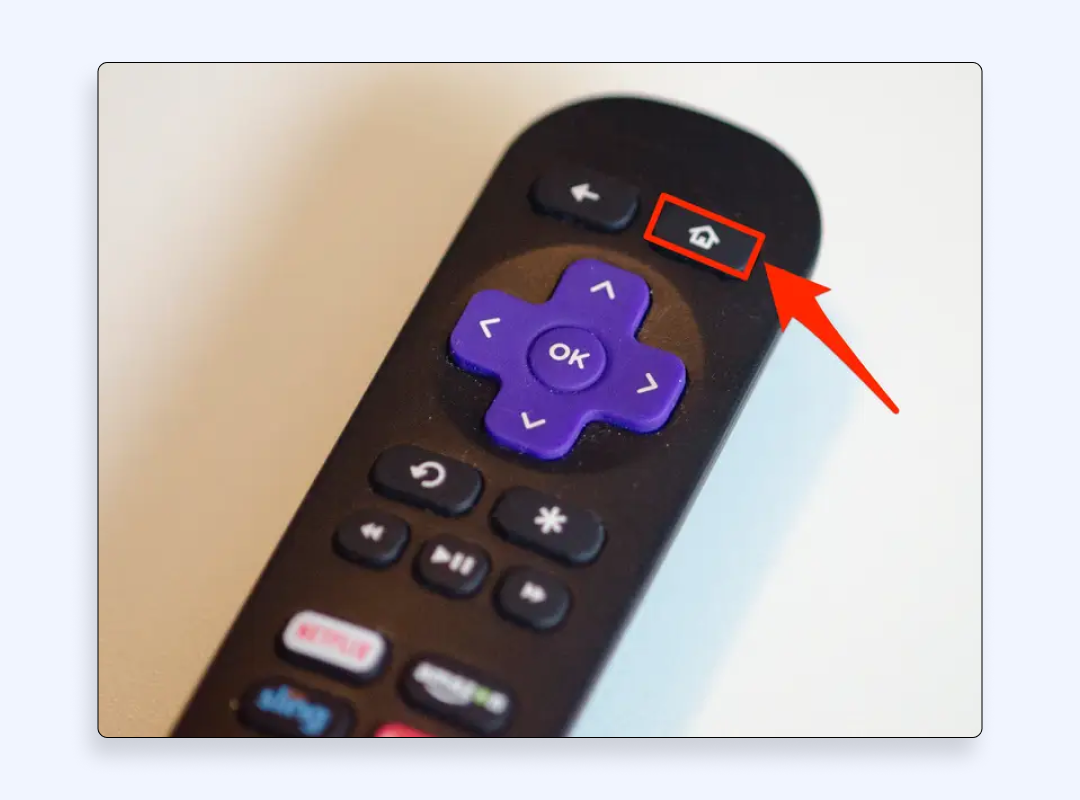
2. Scroll to Settings → Network.
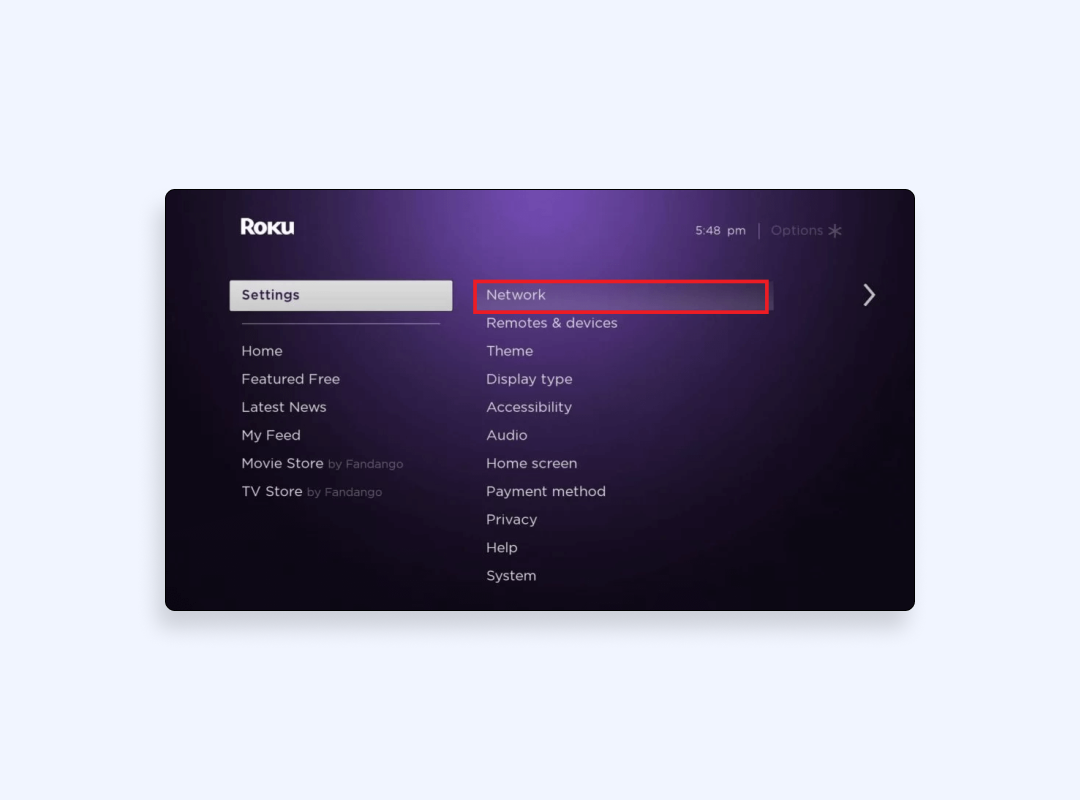
3. Select About.
4. Read the line that says IP address. That’s your Roku TV IP address.
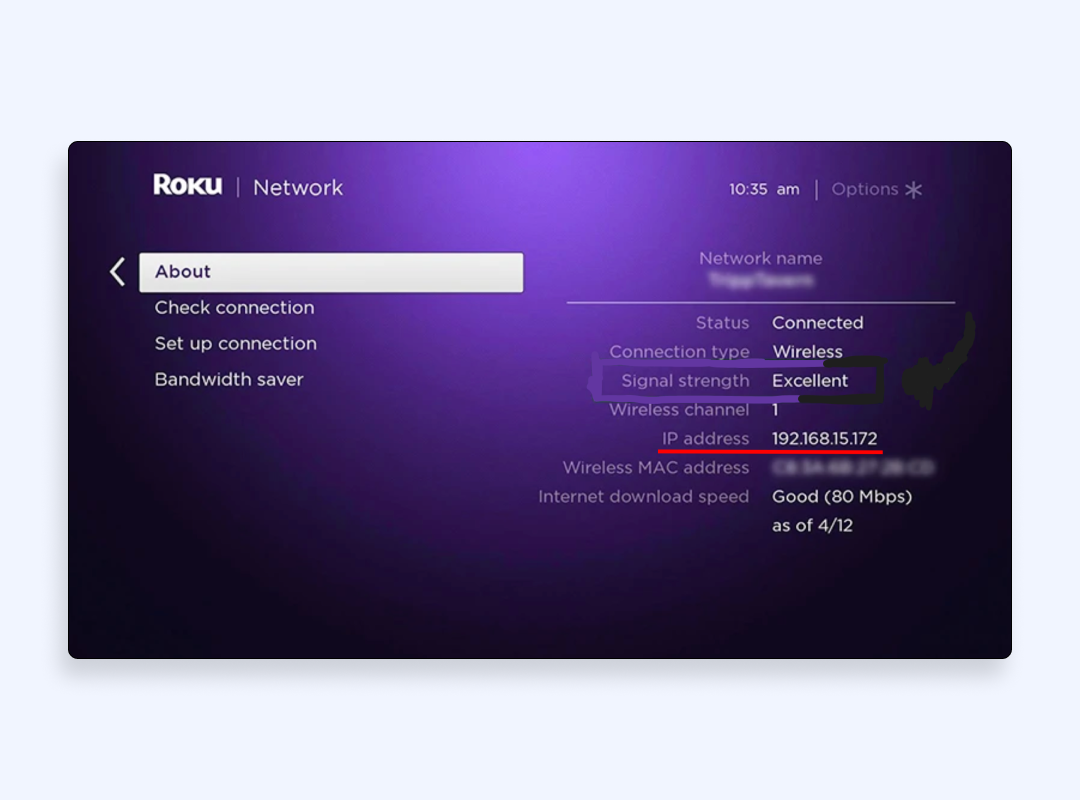
That screen looks identical on every current Roku streaming device. So, these steps also apply if you’re looking for the IP address on Roku stick models.
Lost the plastic remote? No worries. Here is how you can do it with your phone.
Roku IP address from the official mobile app
As far as most of us never part with our phones anyway, finding your Roku TV IP address with it won’t cause any trouble:
1. Open the official Roku mobile app while both the phone and TV share the same Wi-Fi network.
2. Tap the three dots next to the chosen RokuTV.
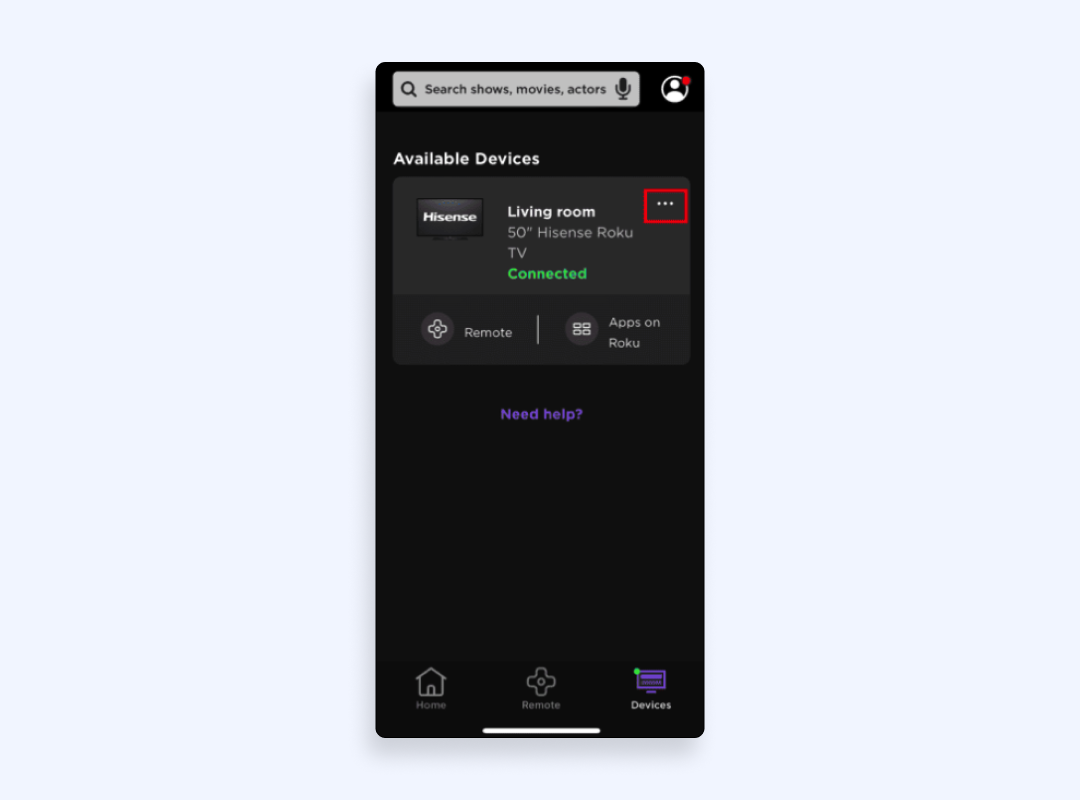
3. Choose View system info.
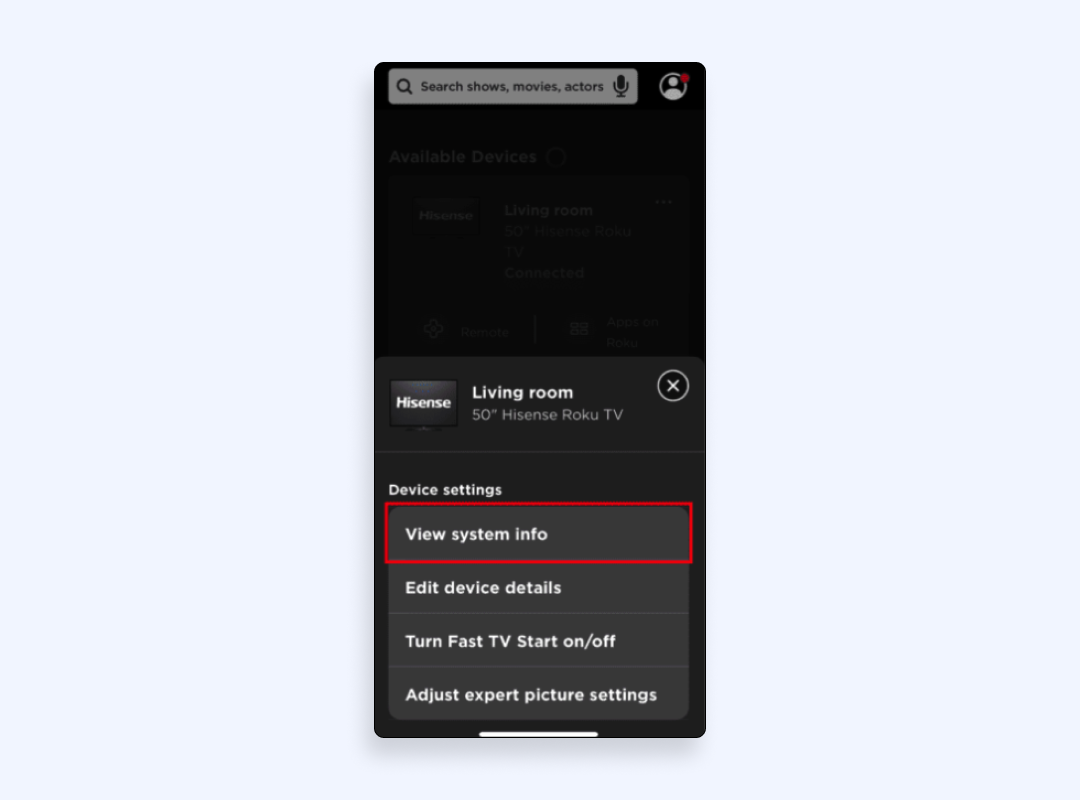
4. The IP appears near the bottom of the panel.
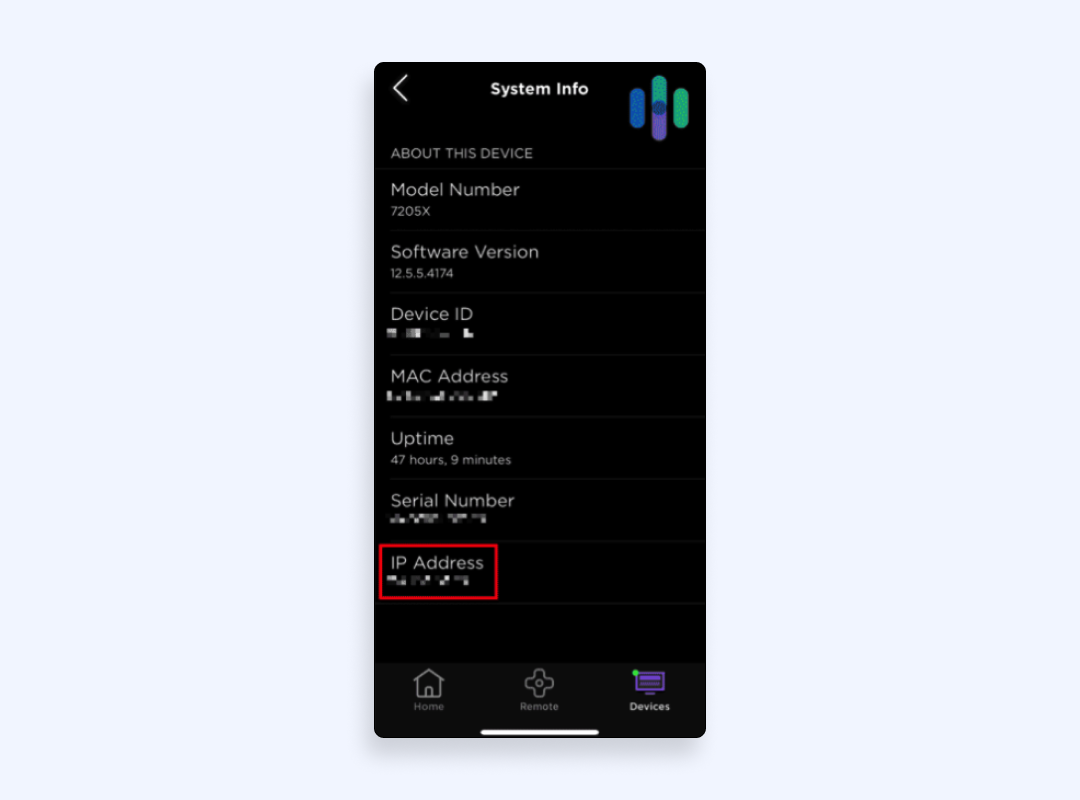
Because the app is on the same network, it auto-discovers the TV through multicast. This method also proves the Roku device’s IP address is broadcasting correctly even when the on-screen menu freezes.
Let’s have a look at how you can find Roku’s IP address using a browser.
Find your Roku’s IP via a web browser
Some users also install the Remoku browser extension when they don’t want to use their phone.
1. Head to remoku.tv in Chrome, Edge, or Firefox.
2. Click Settings → My Network to see every IP that responds to a quick scan of your default IP address range.
3. Remoku tags the entry “Roku-#####” so you can copy the number in seconds.
This method is handy when you’re managing multiple connected devices across a large wireless network. But if you want to get the IP from your Wi-Fi router, use the following method.
Grab the IP inside your router dashboard
If for some reason you can’t access Roku IP address through apps, you can always rely on the gateway:
- First, find the router’s IP address on your laptop or PC:
For Windows
1. open Command Prompt
2. Type “ipconfig”
3. Read the line labeled Default Gateway.
For macOS
1. Go to System Settings
2. Choose “Network”
3. Select “Wi-Fi”
4. Click “Details”
5. Find the “TCP/IP” section
6. There you’ll see the router IP address.
- Enter that router’s IP address in a browser and log in with your Wi-Fi admin credentials.
- Open WLAN (for Wi-Fi) or LAN (for wired network connection via Ethernet cable).
- Find your Roku under the device list. The Roku IP address location will be placed beside the hostname.
If you follow one of these methods, you’ll find your Roku TV IP address. But why might you need to do it?
Why knowing your Roku TV’s IP address actually matters
The Roku TV IP address is basically your Roku’s home address on your Wi-Fi network. And once you know it, you can unlock a bunch of useful features — or fix annoying problems. Here are the reasons why you might want to find that IP:
Fix streaming issues quickly
When your Roku starts buffering or disconnecting, it’s not always your Internet’s fault. Sometimes it’s the device itself having issues on the network. Knowing your Roku TV’s IP address lets you ping the device, which is a simple way to check if your Roku is still communicating with your router properly. If the connection fails, you’ll know the Roku is the one to blame, and not your modem or Internet connection.
Connect smart home devices smoothly
If you want your Alexa or Home Assistant setup to control your Roku, you’ll need its IP address — and ideally, a static one. Without a fixed IP, your smart home hub might lose track of the Roku and stop sending commands. Assigning a static IP ensures your Roku always stays visible and responsive on your smart home’s network.
Set up a VPN router and check the new gateway
If you’ve installed custom firmware like DD-WRT on your router, chances are you’re routing your traffic through a VPN for privacy. After you set it up, the first thing you’ll want to do is make sure your Roku picks up the right gateway IP. And knowing how to find your Roku’s IP addresses is the way you can confirm it’s using the VPN.
Prioritize Internet traffic with Quality of Service (QoS) settings
If your home network gets crowded – maybe someone’s gaming, another person’s on a Zoom call, and you’re trying to stream – you’ll want to make sure the right devices get the speed they need. Routers with QoS controls let you assign priority based on IP address. That means you can make sure your Roku doesn’t hog bandwidth during work hours or guarantee it gets smooth streaming when it’s movie night.
But have you ever thought that your Roku IP address might pose some threats to your privacy?
Your Roku IP address can also be a privacy risk
Yes, Roku TV is likely to be tracking you and here’s what it’s interested in the most.
Collecting kids’ data
In April 2025, Roku was hit with a lawsuit from the Michigan Attorney General for allegedly collecting kids’ personal data, including IP addresses, without proper consent.
Your Roku TV also watches you and sends data to advertisers
Additionally, Roku uses a technology called Automatic Content Recognition (ACR), which quietly analyzes what you’re watching frame by frame and can send that data back to advertisers. Over time, your IP address can get linked to your viewing habits, location, and even your household behavior. So even if you never signed in or clicked “yes” on any popups, your Roku might still be feeding data to ad companies behind the scenes.
That is why you might consider adding an additional layer of protection. You can fight back by hiding your Roku’s IP address with a VPN.
Use VeePN for secure Roku TV watching experience
When you use a VPN on your router, it replaces your real IP address with a random, anonymous one. This way, anyone trying to track your activity hits a wall, including ad networks, and your Internet service provider (ISP). Here’s what makes VeePN a great option for Roku users:
Easy setup on routers
Whether you use AsusWRT, OpenWRT, Tomato, or other routers, VeePN works with all of them. The setup process is beginner-friendly and gets your VPN running across your whole home in minutes.
Built for smooth streaming
VeePN has over 2,500 servers that are optimized for streaming, so you won’t get blocked by Netflix, Hulu, or other platforms. You get access to global libraries without buffering issues.
Military-grade encryption
With AES-256 encryption (the same standard banks use), your Internet traffic will be protected from tracking, spying, and throttling by your Internet Service Provider.
No Logs policy
VeePN doesn’t log your browsing data or online activity. There’s no record of what shows you watch, what websites you visit, or when you’re online.
Covers up to 10 devices
One VeePN subscription lets you simultaneously protect your Smart TV, router, phone, laptop, tablet, and other devices.
Try using VeePN without any risks, as we offer a 30-day money-back guarantee.
FAQ
- Press Home on the remote.
- Navigate to Settings ▶ Network ▶ About.
- Your IP shows first in the network details card—snap a pic or jot it down.
Read this article for more details.
- Connect your phone and TV to the same Wi-Fi.
- Open the official Roku mobile app and sign in with your Roku account.
- Tap the three-dot menu next to your device, pick “View system info,” and the IP address pops up.
Read this article for more details.
VeePN is freedom
Download VeePN Client for All Platforms
Enjoy a smooth VPN experience anywhere, anytime. No matter the device you have — phone or laptop, tablet or router — VeePN’s next-gen data protection and ultra-fast speeds will cover all of them.
Download for PC Download for Mac IOS and Android App
IOS and Android App
Want secure browsing while reading this?
See the difference for yourself - Try VeePN PRO for 3-days for $1, no risk, no pressure.
Start My $1 TrialThen VeePN PRO 1-year plan








